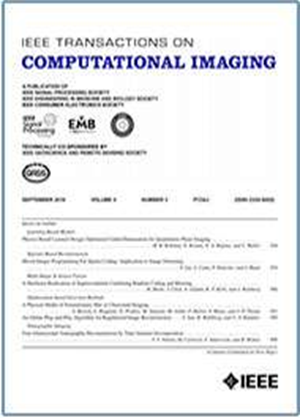Clip-Driven Universal Model for Multi-Material Decomposition in Dual-Energy CT
IF 4.2
2区 计算机科学
Q2 ENGINEERING, ELECTRICAL & ELECTRONIC
引用次数: 0
Abstract
Dual-energy computed tomography (DECT) offers quantitative insights and facilitates material decomposition, aiding in precise diagnosis and treatment planning. However, existing methods for material decomposition, often tailored to specific material types, need more generalizability and increase computational load with each additional material. We propose a CLIP-Driven Universal Model for adaptive Multi-Material Decomposition (MMD) to tackle this challenge. This model utilizes the semantic capabilities of text embeddings from Contrastive Language-Image Pre-training (CLIP), allowing a single network to manage structured feature embedding for multiple materials. A novel Siamese encoder and differential map fusion technique have also been integrated to enhance the decomposition accuracy while maintaining robustness across various conditions. Experiments on the simulated and physical patient studies have evidenced our model's superiority over traditional methods. Notably, it has significantly improved the Dice Similarity Coefficient—4.1%. These results underscore the potential of our network in clinical MMD applications, suggesting a promising avenue for enhancing DECT imaging analysis.双能CT中多材料分解的夹驱动通用模型
双能计算机断层扫描(DECT)提供定量见解,促进材料分解,有助于精确诊断和治疗计划。然而,现有的材料分解方法通常针对特定的材料类型,需要更多的通用性,并且随着每增加一种材料,计算负荷就会增加。我们提出了一个clip驱动的通用模型,用于自适应多材料分解(MMD)来解决这一挑战。该模型利用对比语言图像预训练(CLIP)的文本嵌入的语义能力,允许单个网络管理多个材料的结构化特征嵌入。还集成了一种新的暹罗编码器和差分地图融合技术,以提高分解精度,同时保持各种条件下的鲁棒性。仿真实验和实物实验证明了该模型优于传统方法。值得注意的是,它显著提高了骰子相似系数——4.1%。这些结果强调了我们的网络在临床烟雾病应用中的潜力,为增强DECT成像分析提供了一条有前途的途径。
本文章由计算机程序翻译,如有差异,请以英文原文为准。
求助全文
约1分钟内获得全文
求助全文
来源期刊

IEEE Transactions on Computational Imaging
Mathematics-Computational Mathematics
CiteScore
8.20
自引率
7.40%
发文量
59
期刊介绍:
The IEEE Transactions on Computational Imaging will publish articles where computation plays an integral role in the image formation process. Papers will cover all areas of computational imaging ranging from fundamental theoretical methods to the latest innovative computational imaging system designs. Topics of interest will include advanced algorithms and mathematical techniques, model-based data inversion, methods for image and signal recovery from sparse and incomplete data, techniques for non-traditional sensing of image data, methods for dynamic information acquisition and extraction from imaging sensors, software and hardware for efficient computation in imaging systems, and highly novel imaging system design.
 求助内容:
求助内容: 应助结果提醒方式:
应助结果提醒方式:


